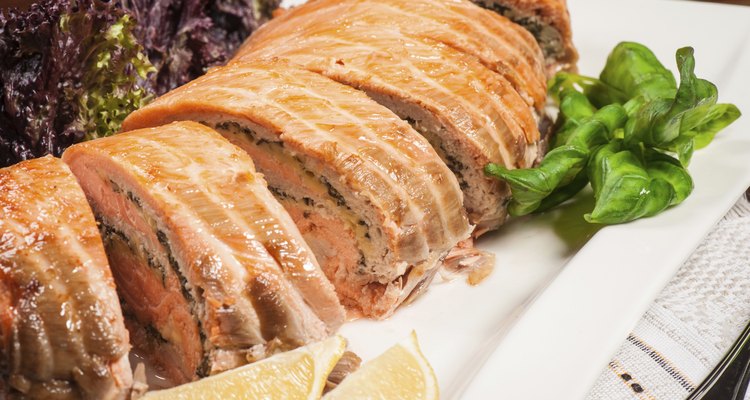
nvelichko/iStock/Getty Images
The experience of a mild-flavored, flaky-fleshed flounder stuffed with fresh, sweet crabmeat is nothing short of superfluously superlative. Flounder lends itself well to enhancement, so the crabmeat stuffing takes over as the real star of the dish. When made with high-quality lump-grade crabmeat, the freshest herbs and a little fat for mouth feel, the stuffing seems as if it's simply using the flounder as a beguiling pelage to protect its delicate texture. You can do stuffed flounder two ways: whole -- best when cooked over an open flame -- or in a roulade, or stuffed fillet, best when roasted in a roaring-hot oven.
Stuffing
Drain the crabmeat if necessary and add it to a mixing bowl. Reserve any juice present.
Add a flavorful fat to the crabmeat. Any flavorful fat, such as olive oil, melted butter or heavy cream, works here. Use just enough fat to give the lean crabmeat a creamy texture and help bind it.
Add an acid to the crabmeat to taste. Lemon juice typically fits best here, but lime juice, soy sauce or even a tomato product, such as finely chopped canned San Marzanos -- which have more acid than fresh -- will work. You want just enough acid to give the fat context on the palate and cut its richness.
Add freshly chopped herbs to the crabmeat. Dill, thyme and basil are classics, but never hesitate to try a few herbs you wouldn’t normally associate with seafood, such as sage, oregano and coriander.
Add finely diced, mildly aromatic vegetables to the stuffing to taste, if desired. Leeks, scallions and fennel work well with crabmeat. If you have any doubts about adding aromatics to taste to crab stuffing, go with the less-is-best approach.
Add a secondary, flavorful binder to the mixture. Egg yolks and mayonnaise work best as secondary binders, but if you want a heavier stuffing, add panko breadcrumbs. Use just enough to lightly hold the stuffing together.
Mix the stuffing by gently folding it into itself with a spoon. Avoid swift stirring; you want to retain as much texture as possible. Season the stuffing to taste with kosher salt and place it in the refrigerator.
Roulades
Heat the oven to 350 degrees Fahrenheit. Pat the flounder fillets dry with a paper towel. Slice each fillet horizontally thought the center, or “butterfly” it, stopping about 1/2 inch from the end, and press it open.
Season the fillets on both sides with kosher salt and freshly ground black pepper to taste. Stir the stuffing and adjust its consistency, if needed, using the reserved liquid.
Spoon crabmeat stuffing to a depth of about 1/2 inch on the opened fillets, keeping it about 1/4 inch from the ends. Roll the fillet into a snug, but not tight, roulade. Tie the roulade snugly at 1-inch intervals with kitchen twine.
Coat the roulades with olive oil and place them in a shallow dish or baking sheet, spaced at least 1 inch apart from each other; place the pan in the oven.
Bake the stuffed flounder until the stuffing reaches 145 F, or about 15 to 20 minutes. Garnish with fresh herbs, drizzle with butter or olive oil and serve.
Whole
Rinse the flounder and pat it dry inside and out. Use a scaled and cleaned flounder, with the head removed, for the stuffed preparation. Coat the fish with olive oil and season it to taste inside and out.
Stuff the flounder's cavity with 3/4 to 1 cup of the crab mixture. Tie the fish crosswise across the cavity gap at 1-inch intervals.
Heat the grill to medium heat. If you have a charcoal grill, 1 layer of charcoal should do it. Close the grill and let it heat for about 15 minutes.
Grill the flounder for 20 minutes on each side, or until it reaches 145 F in the center.
Related Articles
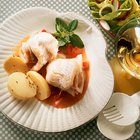
How to Cook Stuffed Sole Fillets
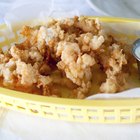
How to Cook Conch
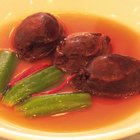
How to Cook Abalone

How to Cook Flounder Fillets

How to Fix Too Much Italian Seasoning ...
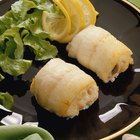
How to Cook Stuffed Sole With Scallops ...
How to Cook Hake Fillet in an Oven

How to Smoke Buffalo Meat

How to Cook Veal Sirloin

How to Cook With Italian Dressing

How to Cook Raw Tuna in Lemon

How to Cook Ono Fish

How to Cook Lamb Chuck

How to Cook Saba Fish
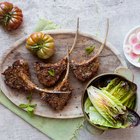
How to Grill Rack of Lamb

How to Bake a Frozen Halibut Fillet

How to Cook Trevally

How to Make Stuffed Derma
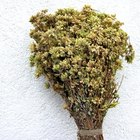
How to Dry or Freeze Oregano

How to Cook Jamaican Jerk Salmon
References
- The Professional Chef 9th Edition; The Culinary Institute of America
Tips
- You can grill whole stuffed flounder in a 350 F oven until the stuffing reaches 145 F, about 30 minutes.
Writer Bio
A.J. Andrews' work has appeared in Food and Wine, Fricote and "BBC Good Food." He lives in Europe where he bakes with wild yeast, milks goats for cheese and prepares for the Court of Master Sommeliers level II exam. Andrews received formal training at Le Cordon Bleu.
Photo Credits
nvelichko/iStock/Getty Images